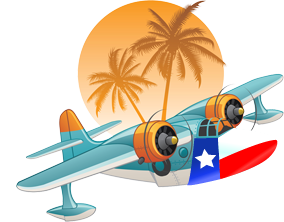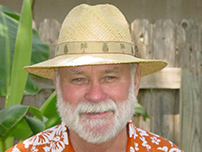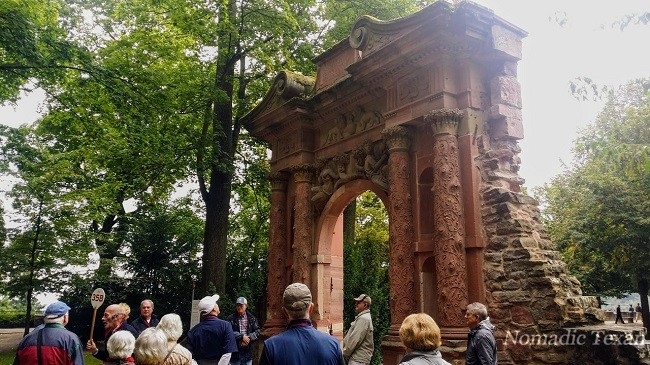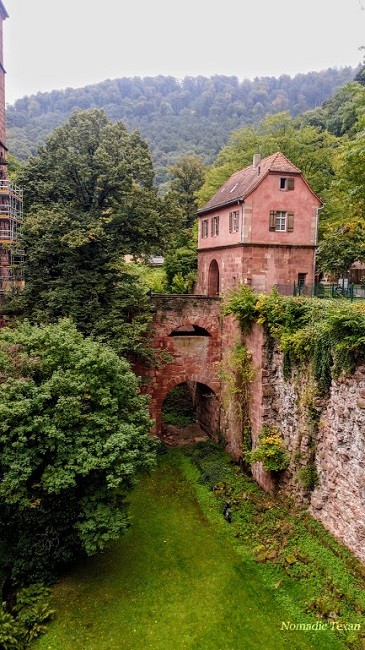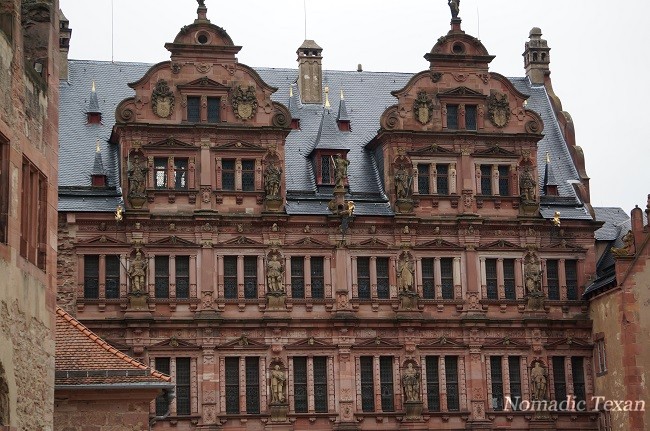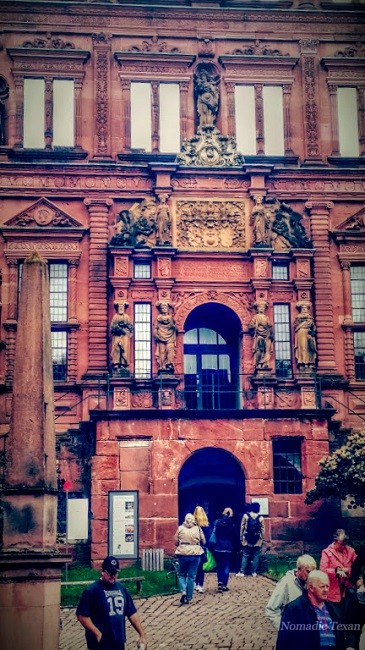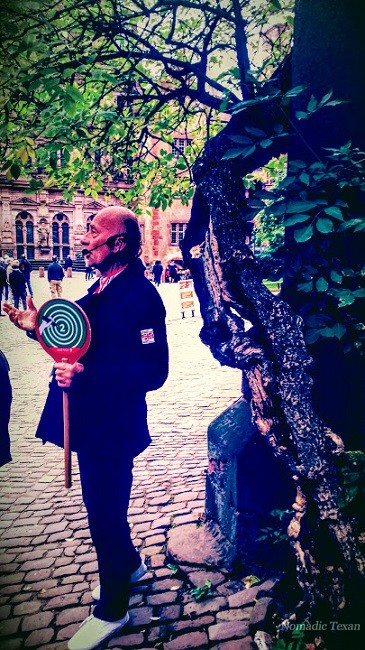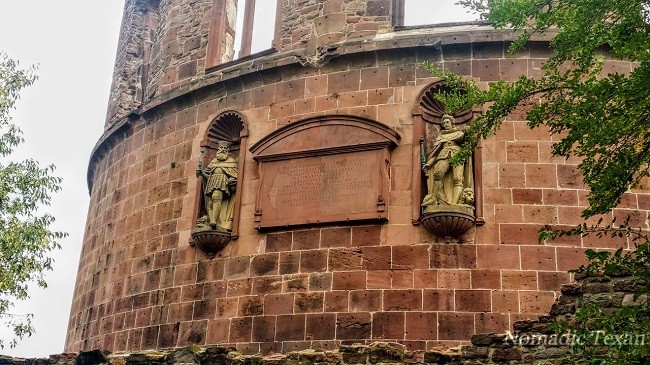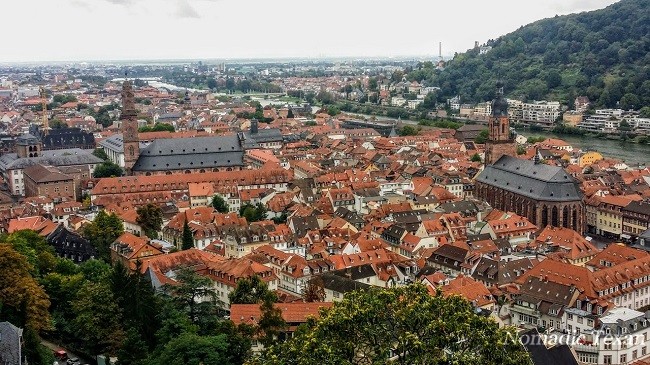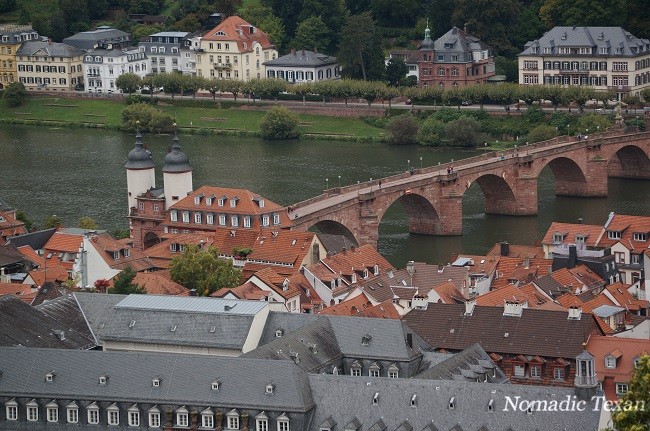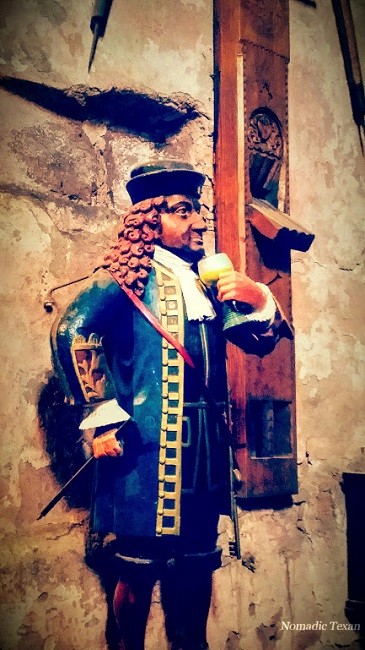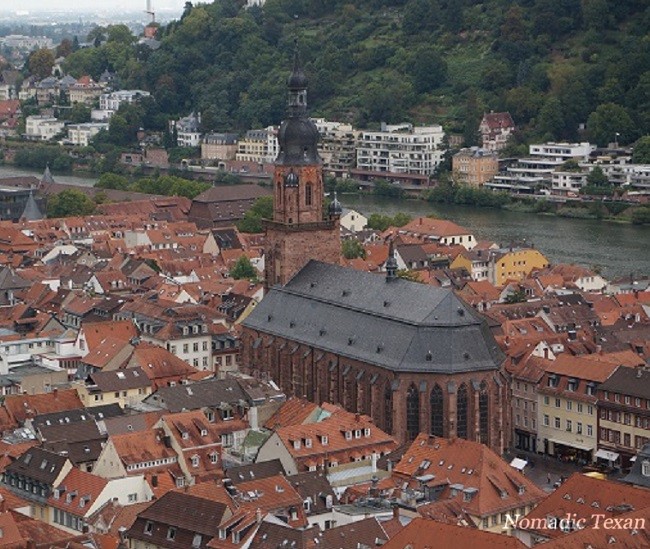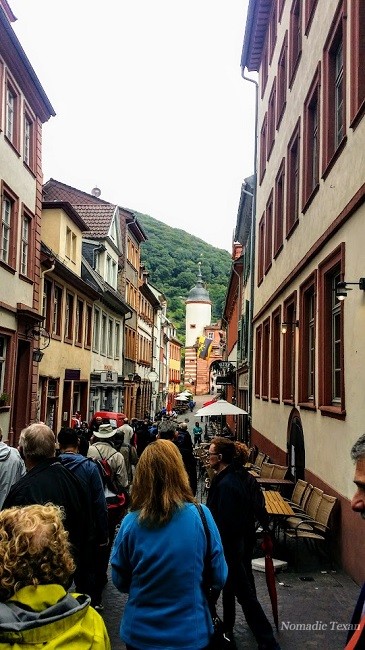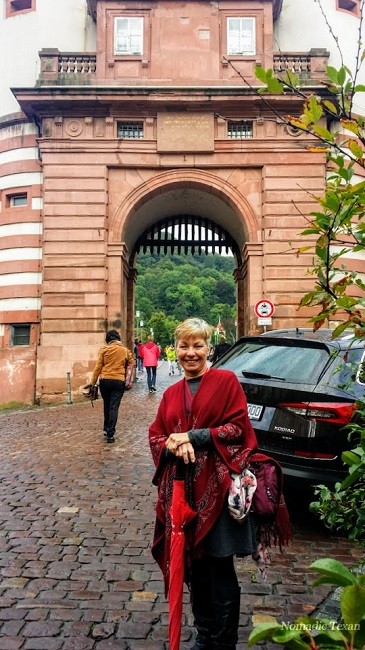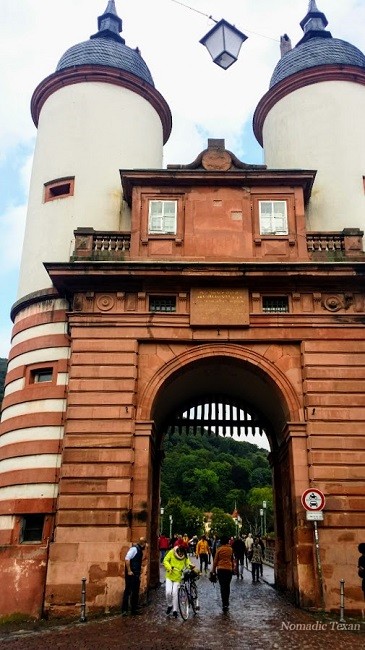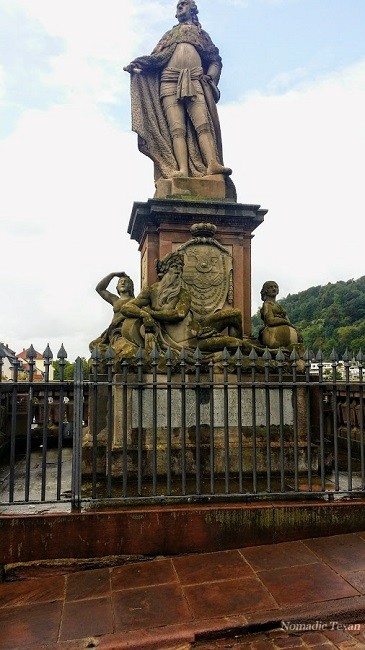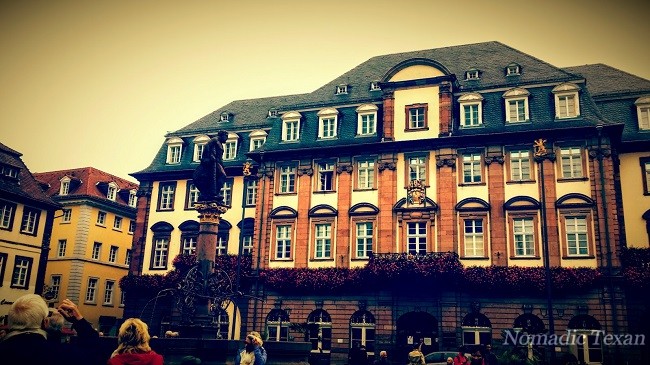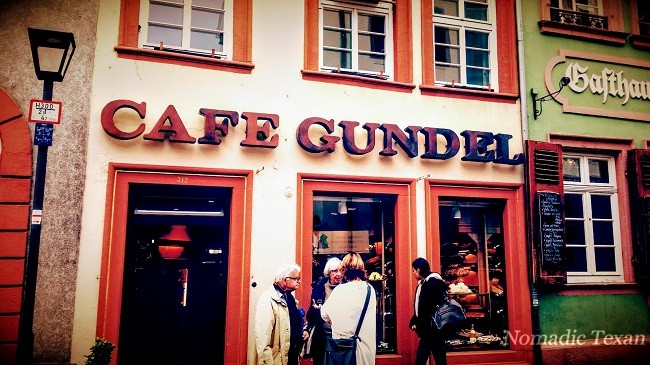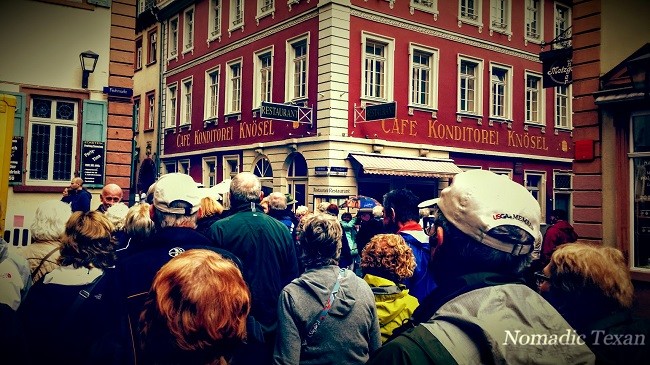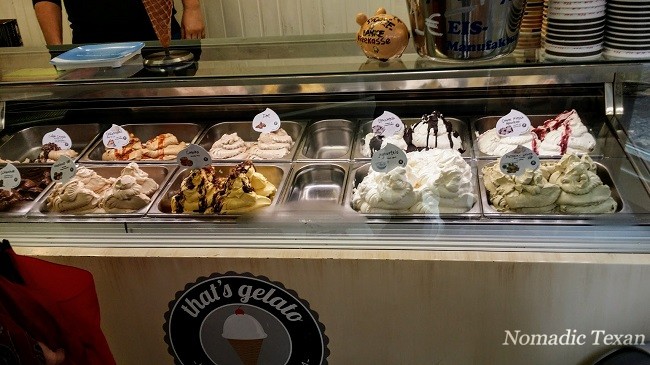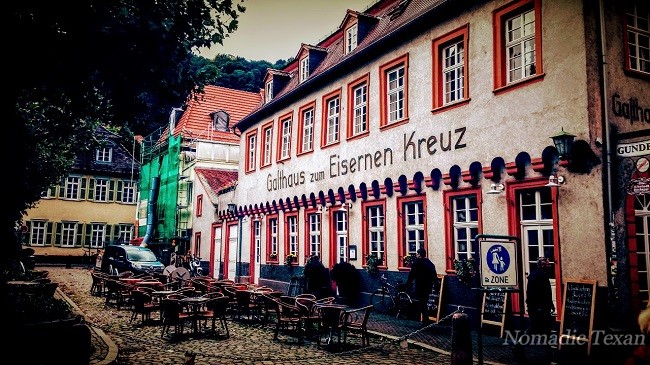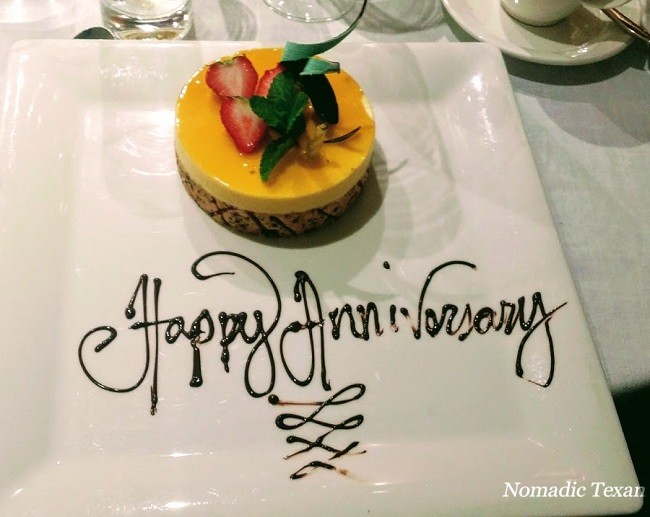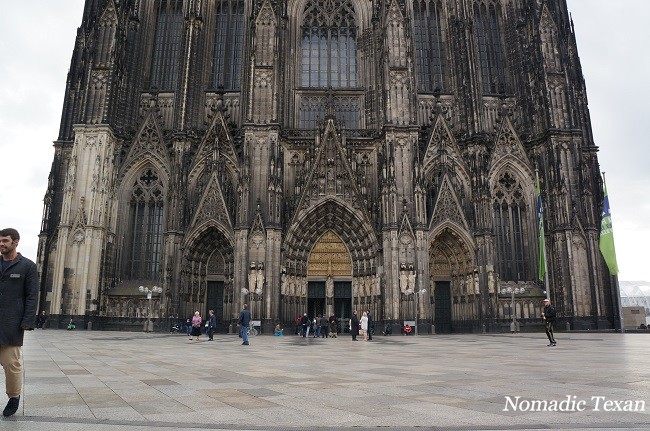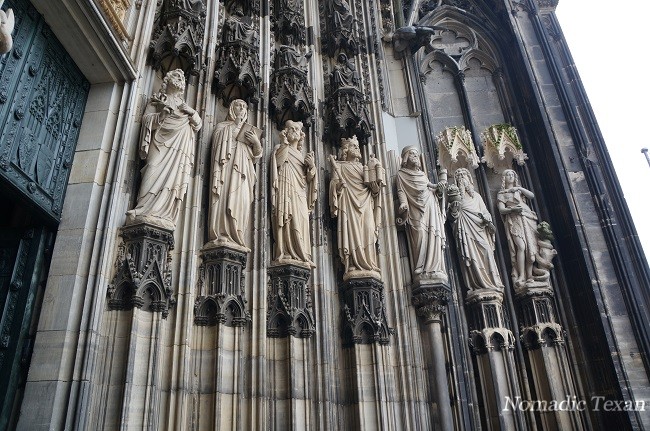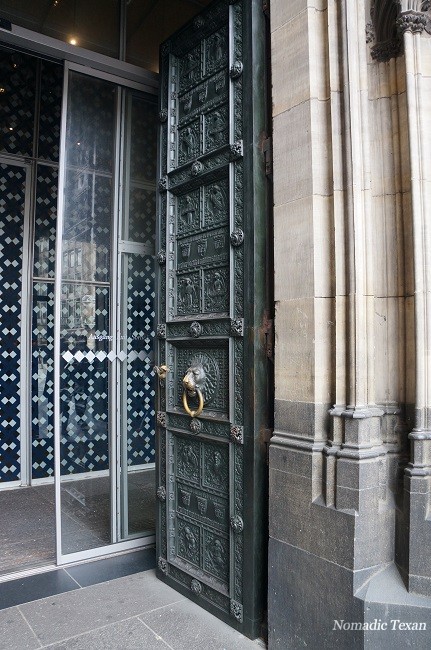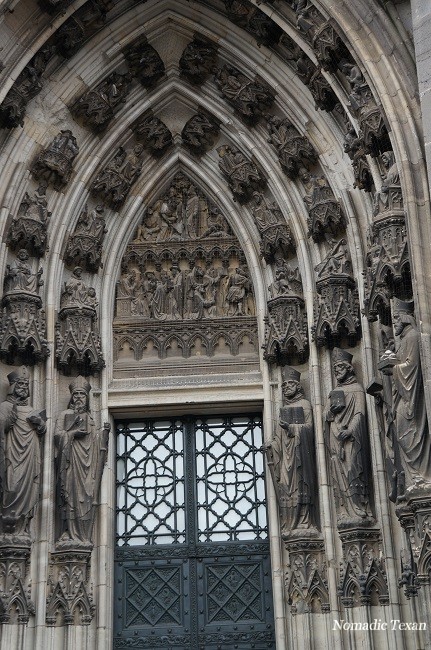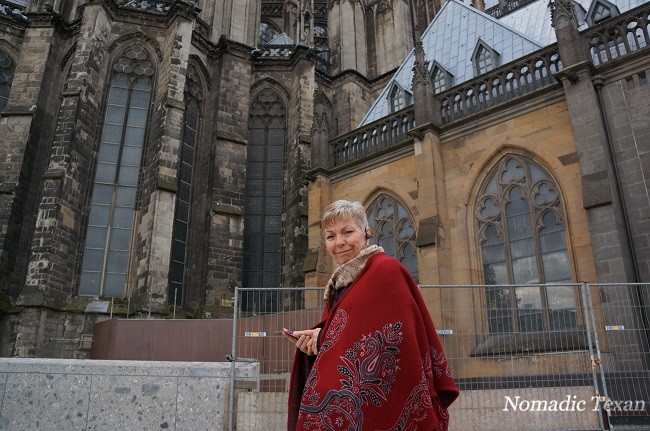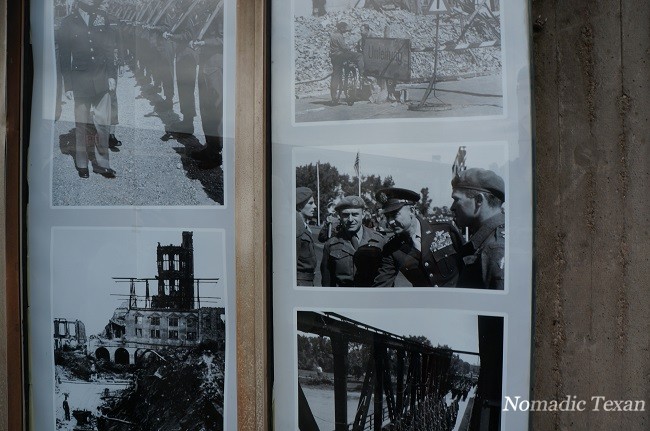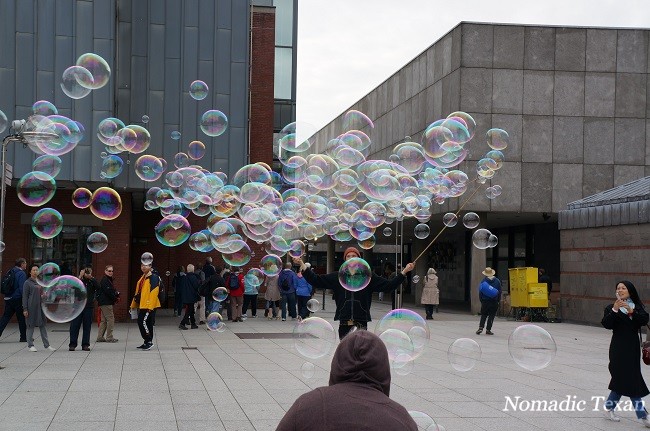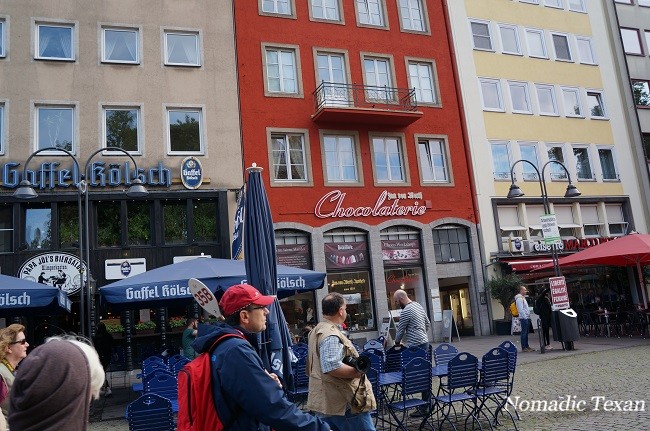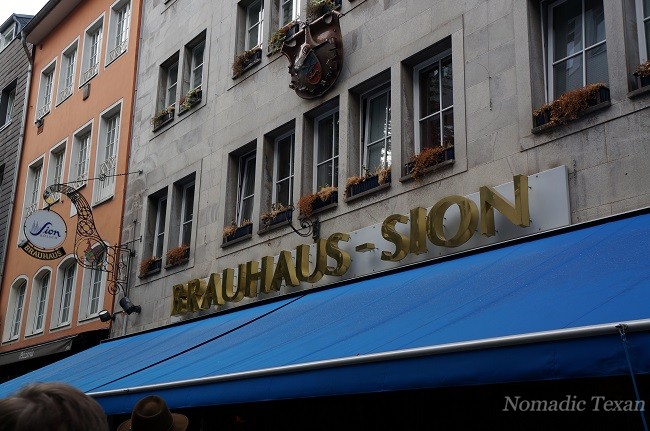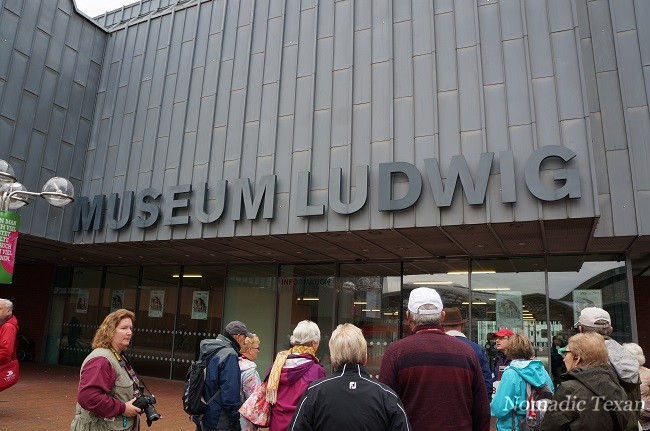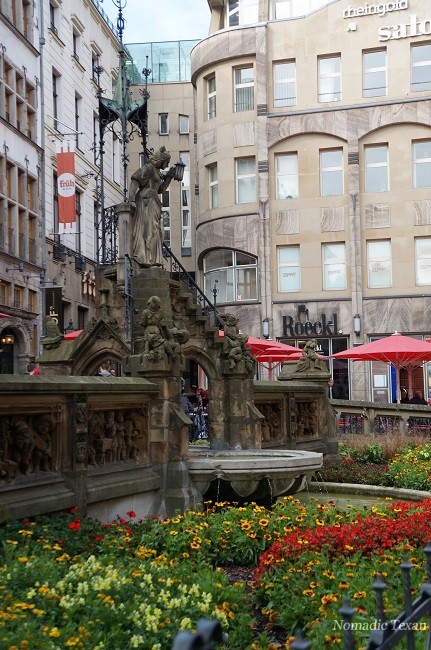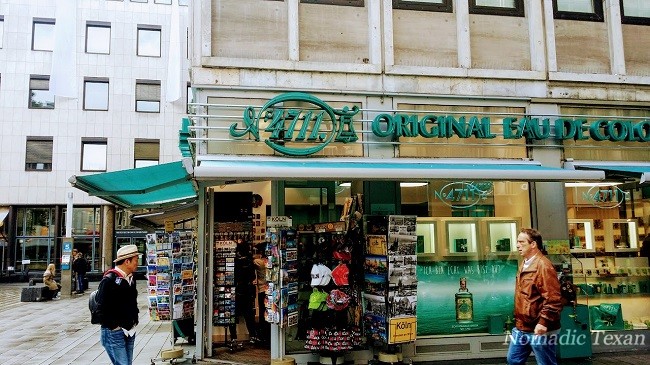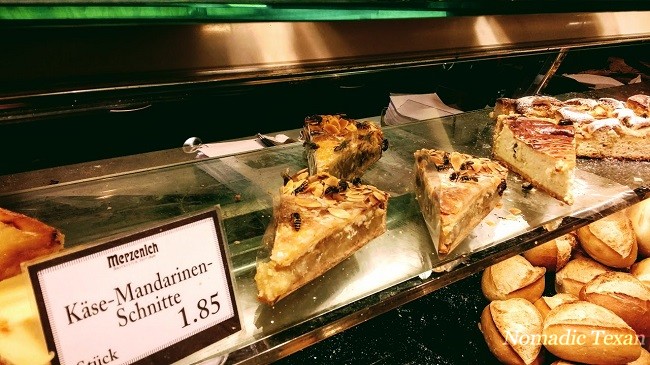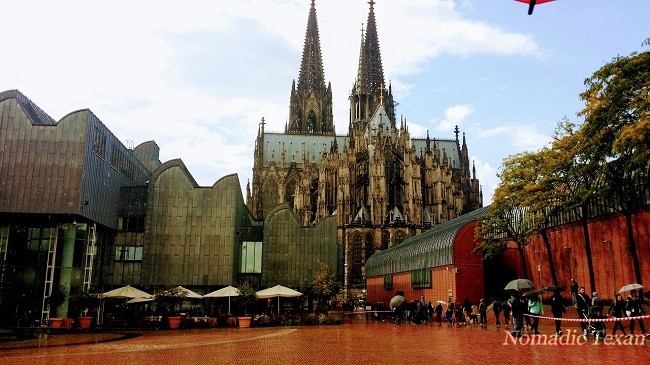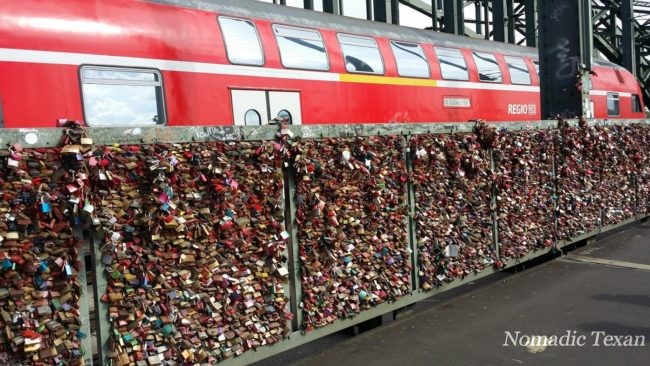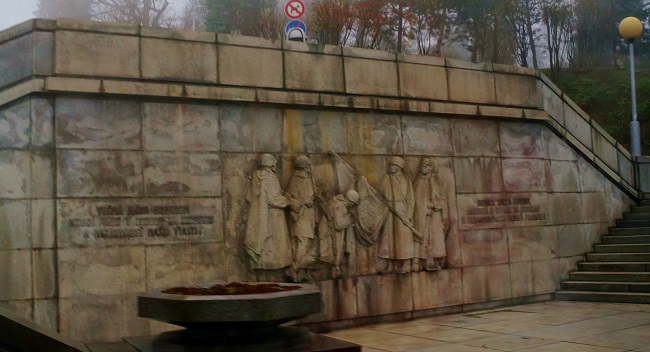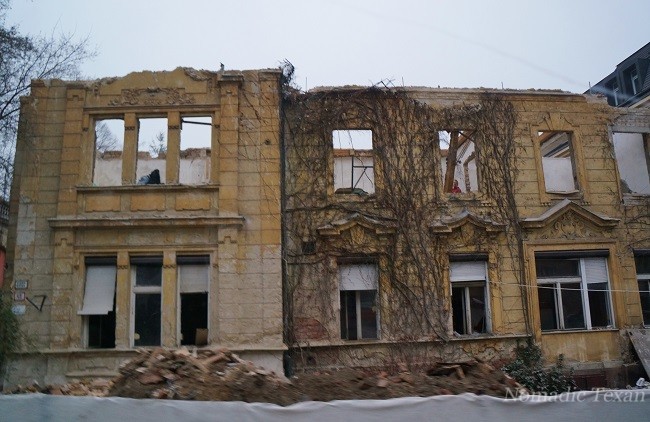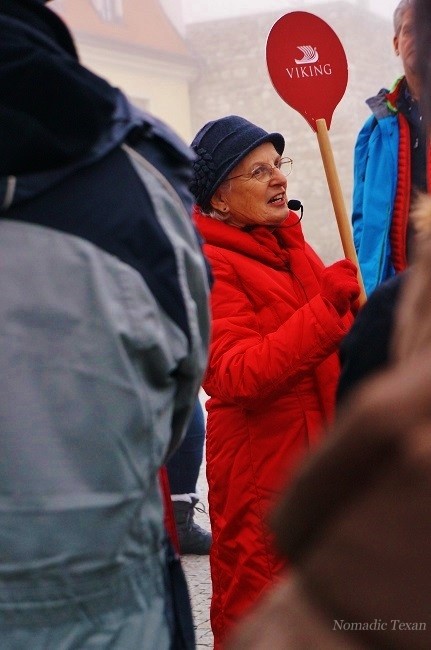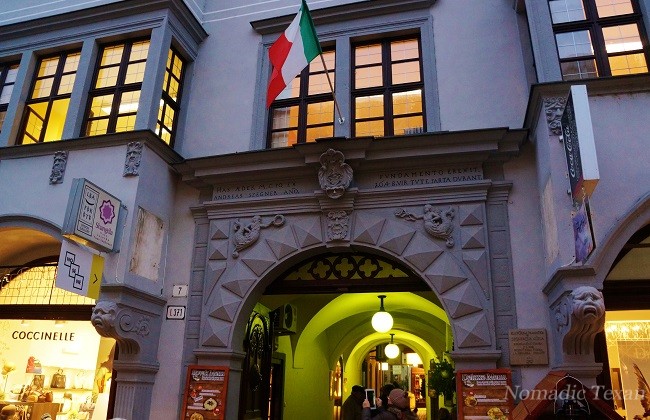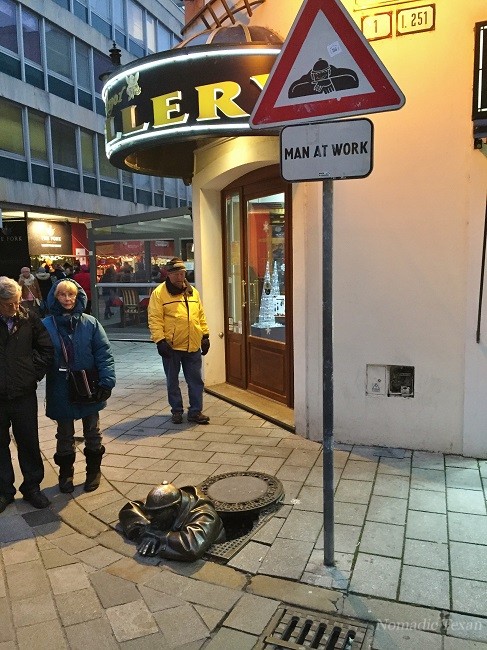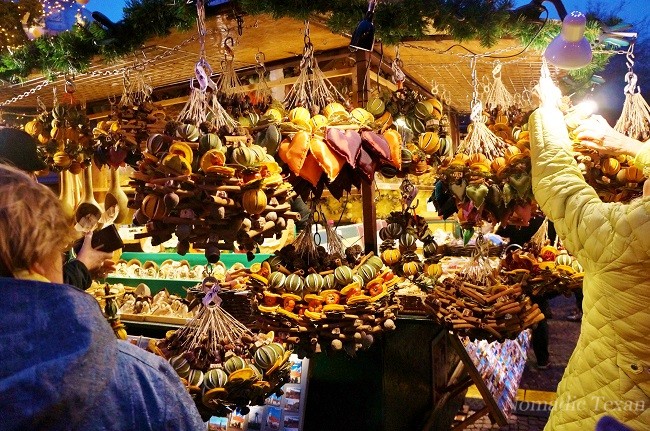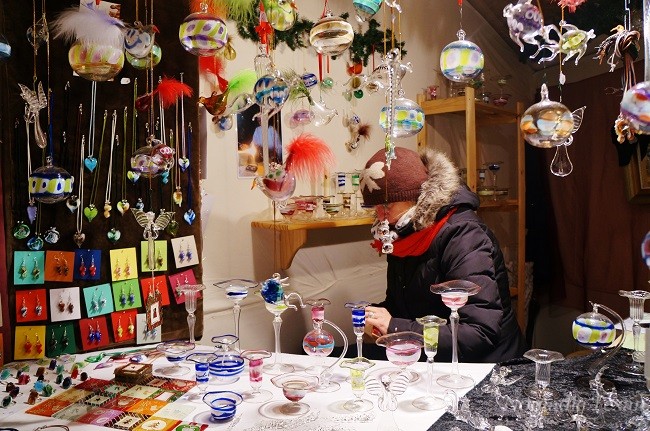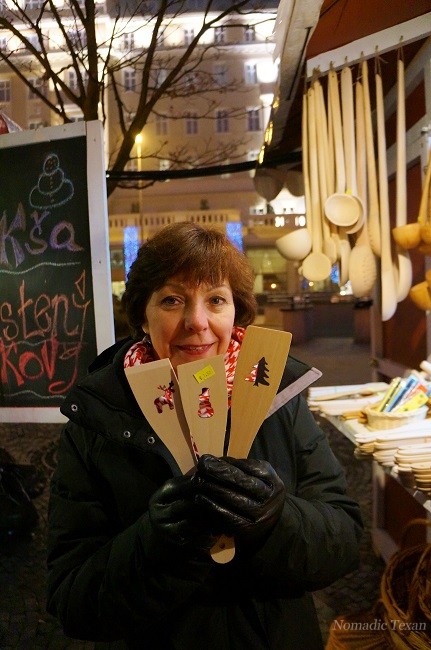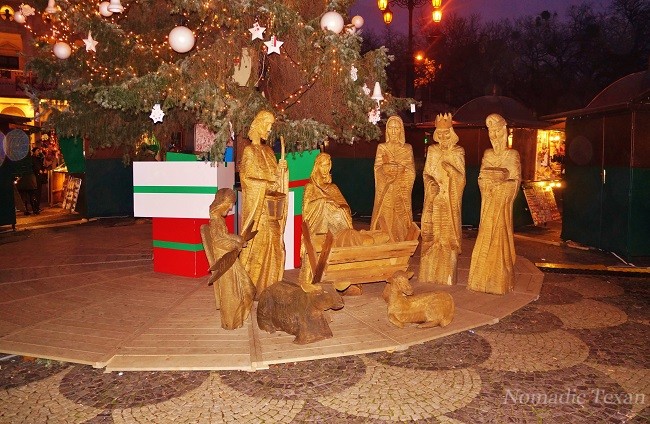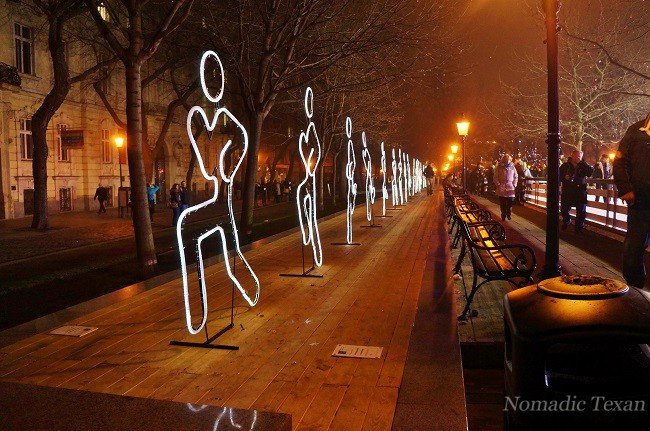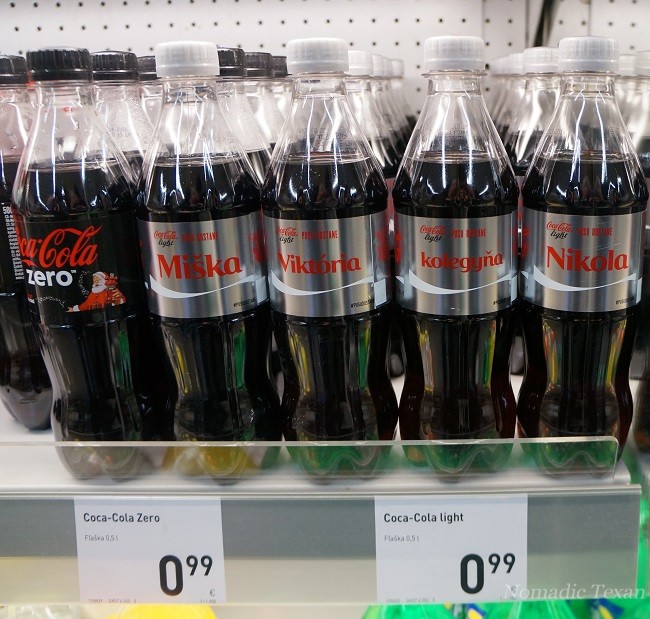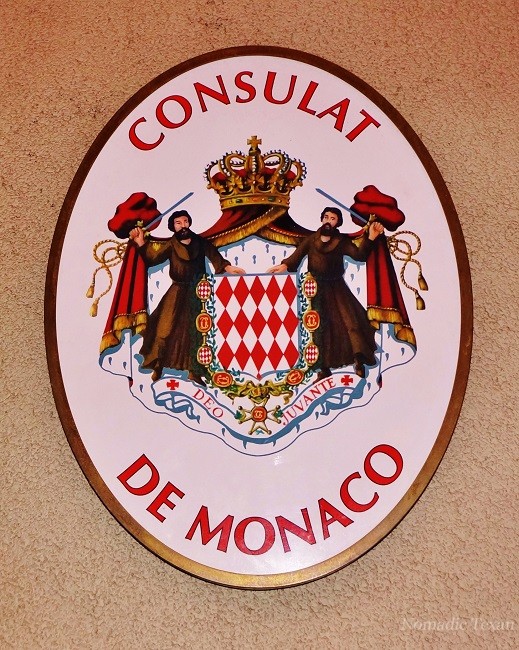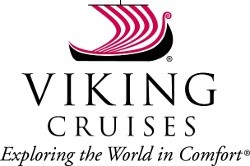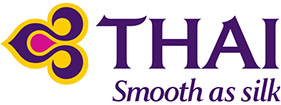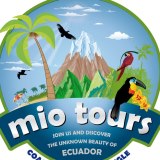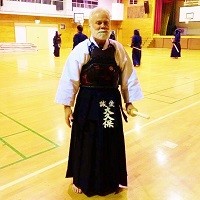Viking Cruises, Strasbourg
We arrived in the double port of Strasbourg France and Kehl Germany. Having never been in France we decided to take the Viking River Cruises walking tour through Strasbourg. We loaded on buses and the first memory I have from this gorgeous city was driving by the European Parliament. My sincere apologies but I had to take my photo through our bus window. I think it still gives you an idea how impressive it is. The European Union has to be happy with its appearance.
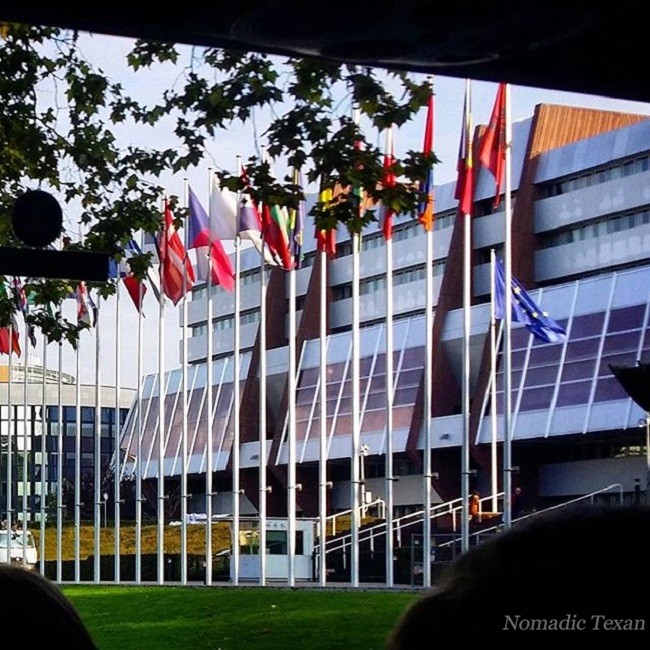
European Parliament Through the Bus Window
We disembarked from the buses and walked past the Barrage Vauban, a bridge over the River Ill. It was beautiful and serene. The historical bridge was erected in the 17th century by Jacques Tarade and displays various ancient copies of statues and gargoyles from the Strasbourg Cathedral. On the roof there is a viewing terrace and the bridge was designated as a Monument “Historique” in 1971. The bridge has 13 arches and is 120 meters in length and three of the arches are raised to allow navigation. The Strasbourg Museum of Modern and Contemporary Art is located adjacent to the Northern end. One can see the Petite France section of Strasbourg from the roof terrace. The name Petite-France (“Little France”) was not given for nationalistic or architectural grounds. It comes from the “hospice of the syphilitic” (Hospice des Vérolés, in French), which was built in the late fifteenth century on this island, to cure persons with syphilis, then called Franzosenkrankheit (“French disease”) in German.
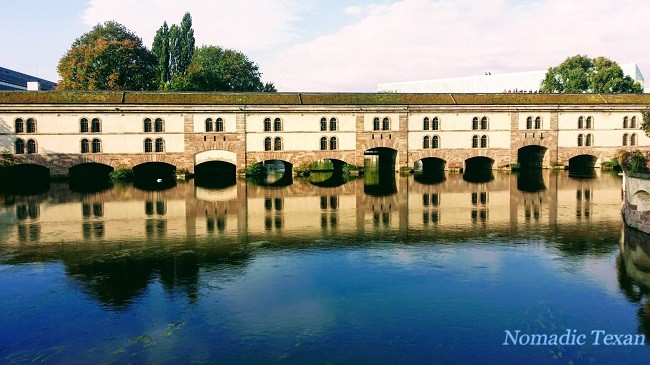
Barrage Vauban Bridge on the River Ill in Strasbourg
As we walked towards the Petite France section of Strasbourg and over the River Ill, I captured these passenger boats/taxis. They are fairly common and I can only gather they have to be fun to ride. I noticed that one had its top removed. I would guess when the weather is good they do not cover the taxis and you get awesome views of the city and areas you traverse. We will take one of these taxis next time, and there definitely will be a next time, as Strasbourg is now one of our favorite cities in Europe, much less the world.

Passenger Boats/Water Taxis in Strasbourg on the River Ill
I was immediately drawn to the half timber houses as our Viking guide led us to the Petite France area of Strasbourg. The half timber architecture strewn throughout the area is magnificent. I couldn’t stop taking photos of the structures. Petite France is a historic quarter in Strasbourg and is located at the eastern end of Grand Ile, the historical center of the city. The river Ill splits up into a number of channels, which run through an area that once was the home of tanners, millers and fishermen in the middle ages. It is now one of Strasbourg’s main tourist attractions, along with being named a UNESCO World Heritage Site in 1988. The river splits into four channels just downstream from the Barrage Vauban and flows through the half-timbered buildings together with the narrow lanes and footbridges that connect them. The passageways date from the 16th and 17th centuries and are gorgeous to stroll.

Viking Walking Tour of the Petite France Area of Strasbourg
The sloping roofs of many of the buildings include open lofts where hides were once dried. Three of the four channels flowing through the quarter run over dams that once drove mills and other industries. The northernmost channel is navigable by passenger boats and water taxis. This channel passes through a lock and the “Pont du Faisan” swing bridge is in the center of the quarter. On the north bank of the river Ill, at the center of the quarter is the Maison des Tanneurs. The former tannery was built in 1572 and is known for its timbered balconies and slanted roofs, where dyed hides were once sprawled to dry in the sun. It was transformed into a restaurant in 1949, the Tanners House is now home to La Maison de la Choucroute, which serves traditional Alsatian cuisine in original surroundings, with the authentic 16th-century beams complemented by ancient furnishings and window boxes brimming with geraniums, These flowers can be found growing all over Petite France on the Half-Timber houses.
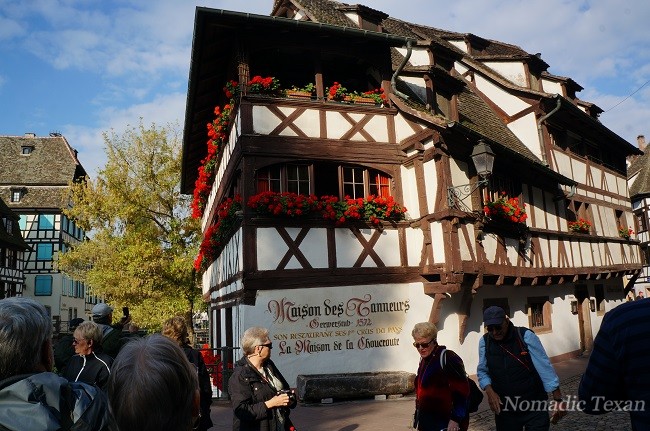
Maison des Tanneurs, home of the Tanner’s Guild
There were several classic, historic restaurants in the Petite France area of Strasbourg and the section is quite well known for its Alsatian food. Alsatian cuisine incorporates Germanic culinary habits and is distinctive by the use of pork in various forms. Alsace is also well known for its “foie gras” made in the region since the 17th century. In addition the region is known for its wine and beer. Alsatian food is synonymous with festivity, the dishes are significant and served in generous portions and it has one of the richest regional kitchens. One of Viking’s “optional tours” was a guided tour in which passengers sampled Alsatian flavors and met food merchants, a French sommelier and a local chef. A second optional tour was tasting Alsatian wines at a local winery. As I do not indulge, we passed on these two options. Other passengers were thrilled with their optional tours.
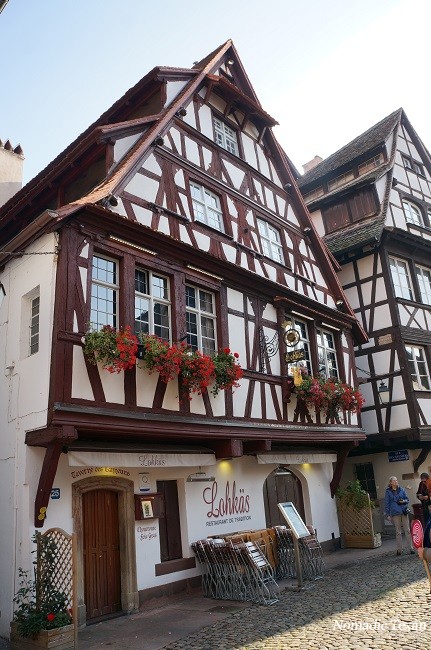
Lohkas Restaurant in Petite France Section of Strasbourg
After walking through several sections of Petite France we came upon a plaza that contained the “Carrousel Palace” and a monument dedicated to Johannes Gutenberg the German printer who introduced printing to Europe with the printing press. His introduction of mechanical movable type printing to Europe started the Printing Revolution and is regarded as a milestone of the second millennium. His major work, The Gutenberg Bible (also known as the 42-line Bible), has been renowned throughout history for its immense creative and academic characteristics.
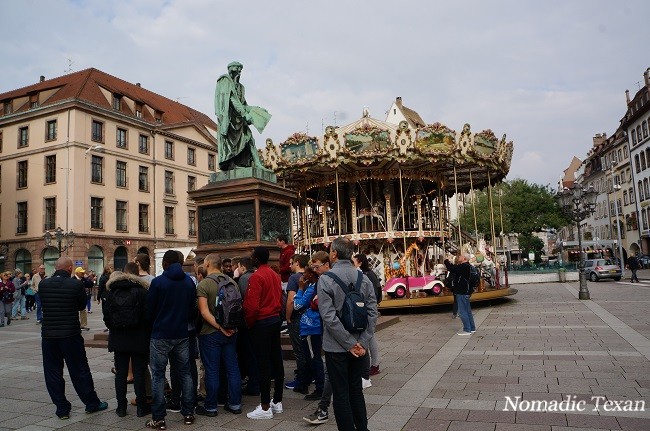
Viking Walking Tour to the Side of the Gutenberg Monument and Carrousel Palace in Strasbourg
We left the plaza and took a side street that led directly into the Strasbourg Cathedral or the Cathedral of Our Lady of Strasbourg. The Cathedral is largely Gothic construction and the architect Erwin von Steinbach is credited with its design. It is among the world’s tallest churches and was once (1647-1874, 227 years) the tallest in the world. The north tower, completed in 1439 is 142 meters or 466 feet tall. It remains the highest structure built in the Middle Ages. The projected south tower was never consummated and as a result, with its characteristic disproportionate form, the cathedral is now the number one landmark of Alsace. One can see 30 kilometers from the observation level of the north tower and the view extends from the Rhine river all the way to the Black Forest.

Strasbourg Street Leading Into the Strasbourg Cathedral or the Cathedral of Our Lady of Strasbourg
As we walked towards the Cathedral we passed this souvenir shop with plenty of stuffed storks for sale. In this part of Europe the Storks has a prominence not reflected anywhere else to my knowledge. You see nests all over on telephone posts, roof tops and on top of steeples. They are treated very reverently by the locals. After almost disappearing in Europe early in the twentieth century, the country made the stork population growth a high priority with postcards, art, tableware, textiles and two Stork based theme parks in Alsace all dedicated to the White Stork. Breeding in captivity has vastly increased population and storks are featured of the decor in many Alsatian villages and towns with horizontal wagon wheel on the top of poles and chimneys being provided as base for storks nests. They even nest on power-lines. ….and of course, in Alsace, like elsewhere in the world the storks main job is delivering babies!
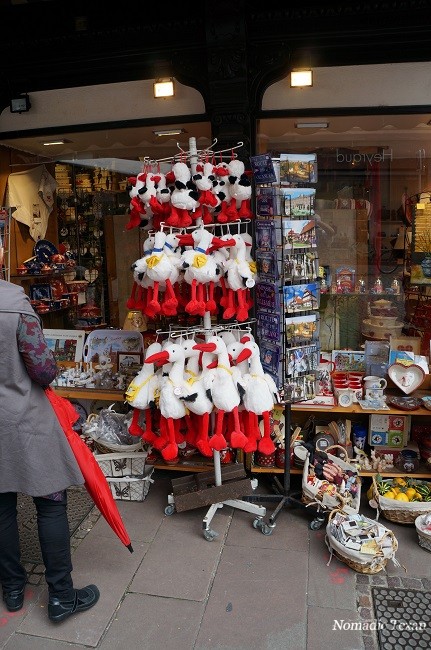
Strasbourg Stuffed White Storks
Bredele are biscuits or small cakes traditionally baked in Alsace and Moselle, France around Christmas time. Many varieties can be found, including new ones, so that assortments can be created. Pain d’epices (gingerbread) comes in all sizes and shapes and is baked year round. From the traditional Gingerbread man that children love to bite the head off of, to the funnel shaped cakes pictured below on the top shelf. We were very fond of this particular shape and brought several dozen home to give as presents. Unfortunately for our waistlines we chose to devour many of them.

Pain d’epices (gingerbread) Shop
Most passengers took optional tours, ate at a traditional Alsatian restaurant or shopped for other goods. Kim and I shopped for sweets, cakes, chocolate and gingerbread. My oh my did we shop. Four bags later (filled with every concoction you can imagine) we left to meet up for our bus return to the ship. We barely could carry all the goods we bought and were flabbergasted at the actual number of items we acquired!
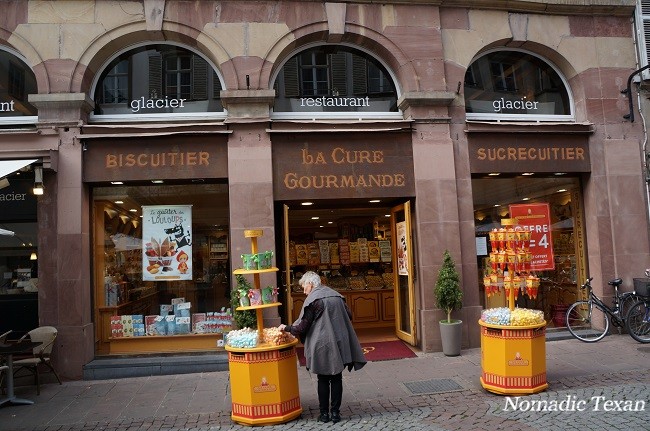
Strasbourg Biscuit and Cookie Store Where we bought an Entire Shopping Bag of Cookies
We entered this chocolate shop that had two free flowing chocolate fountains. Of course one was a milk chocolate flavor and the other dark chocolate. I knew I was in heaven! After walking about five steps I started picking up chocolate candies, including various bark items. We then walked a few more steps and started choosing our truffle flavors. We could have shopped all day, but stopped after obtaining boxes of chocolates for family and friends (and yes one for us) we got to the register. It was hilarious as the shop was empty when we entered, but filled it up in a few minutes and we almost couldn’t check out because it was so crowded. The cashier was having trouble with her credit card machine and a line formed, frustrating her a great deal. We finally finished our transaction and left before buying the entire store!
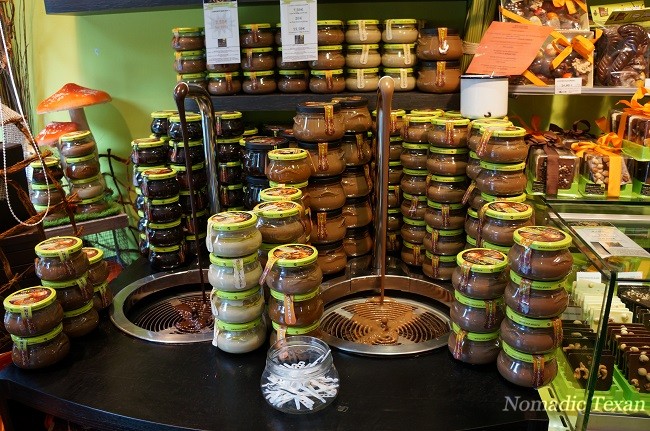
Strasbourg Chocolate Shop with Fountains of Milk and Dark Chocolates
Construction on the Strasbourg Cathedral or the Cathedral of Our Lady of Strasbourg began with a Romanesque style in 1176 and was basically completed in 1439. In 1225 a unit from Chartres suggested it reflect a Gothic style of architecture and portions of the nave, already begun, were torn down and replaced with a Gothic construction. The Chartres group influenced the sculptures, statues and especially the front or west side of the Cathedral. This entrance is trimmed in ornate decorated figures. These characters are representative the Gothic era and are considered a masterpiece from that period in history. The tower is one of the first to rely substantially on craftsmanship and whose construction is inconceivable without prior drawings. Strasbourg and Cologne Cathedral together represent some of the earliest uses of architectural drawings.
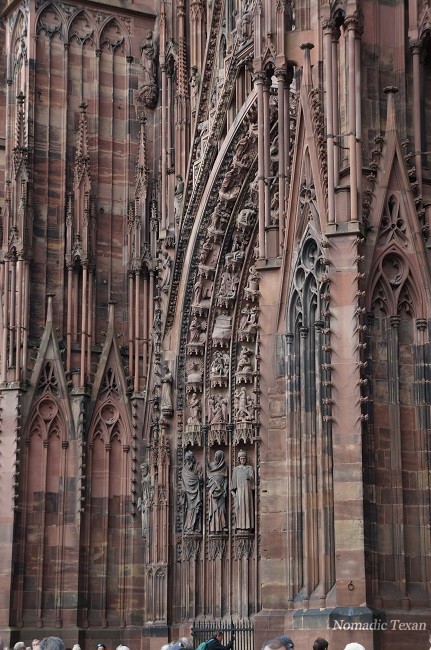
Strasbourg Cathedral or the Cathedral of Our Lady of Strasbourg Exterior Western Front Door Trim
Like the city of Strasbourg, the cathedral connects German and French cultural influences. The eastern structures, still have very Romanesque features, with more emphasis placed on walls than on windows. In 1505, architect Jakob von Landshut and sculptor Hans von Aachen finished rebuilding the Saint-Lawrence portal outside the northern transept in a distinctly post-Gothic, early-Renaissance style. As with the other portals of the cathedral, most of the statues now to be seen in place are copies, the originals having been moved to Strasbourg’s Musée de l’Œuvre Notre-Dame.
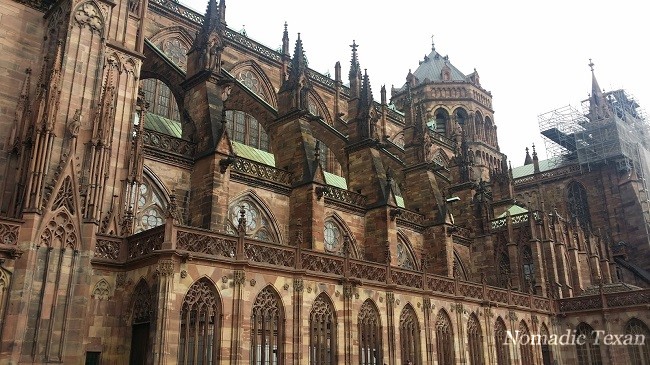
Strasbourg Cathedral or the Cathedral of Our Lady of Strasbourg Side View
In the late Middle Ages, the city of Strasbourg had managed to liberate itself from the domination of the Catholic bishop and became Protestant in 1539. This reign only lasted a short period until September 1681 when Louis XIV of France annexed the city and a mass was celebrated in October 1681, in the presence of the king and prince-bishop signifying a return to the Catholics. The interior was redesigned according to the Catholic liturgy. In April of 1794 the “Enrages” who oversaw the city government started trying to tear down the spire, until the city’s citizens overruled and saved the tower.
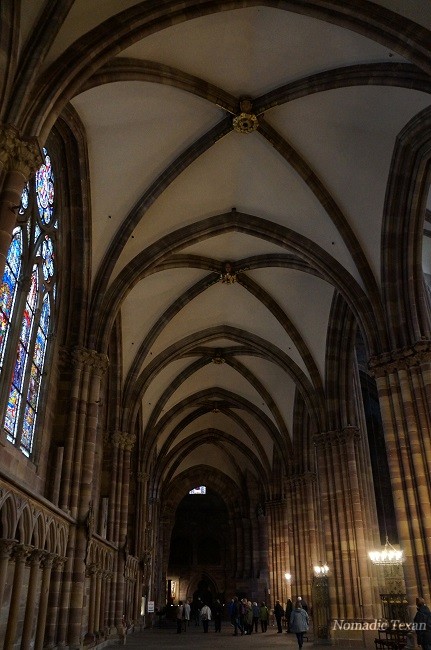
Strasbourg Cathedral or the Cathedral of Our Lady of Strasbourg Interior View
During World War II, the cathedral was seen as a symbol for both warring parties. Adolf Hitler who visited it in June 1940 and intended to transform the church into a “sanctuary of the German people”, or a monument to the Unknown Soldier. On March 1, 1941, the French General Leclerc made the “oath of Kufra”, stating he would “rest the weapons only when our beautiful colors fly again on Strasbourg’s cathedral”. During that same war, the stained glass was removed in 74 cases and stored in a salt mine near Heilbronn, Germany. After the war, it was returned to the cathedral by the Monuments, Fine Arts and Archives section of the United States military.

Strasbourg Cathedral or the Cathedral of Our Lady of Strasbourg Interior View Stained Glass Windows
The cathedral was hit by British and American bombs during air raids on Strasbourg’s center in August 1944, which also heavily damaged the Palais Rohan and the Sainte-Madeleine Church. Repairs to war damage were completed only in the early 1990s. In October 1988, when the city commemorating 2000 years of foundation by Argentoratum (the ancient French name of Strasbourg in 12 BC), pope John Paul II visited and celebrated mass in the cathedral. This event was also an occasion to celebrate the Franco-Germany reconciliation. In 2000, an Al-Queda plot to bomb the adjacent Christmas Market was prevented by French and German police.
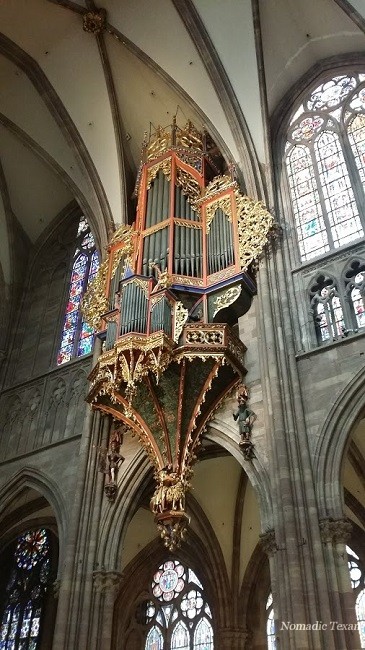
Strasbourg Cathedral or the Cathedral of Our Lady of Strasbourg Interior View
On the way back after purchasing massive amounts of sweets, cakes, gingerbread, chocolates and cookies we ran across a flea market. It was interesting to see the various items displayed for resale and what held the interests of the French shoppers. Some pieces were typical and expected, but some were gorgeous and unexpected. We were thrilled to run across this open-air street market.
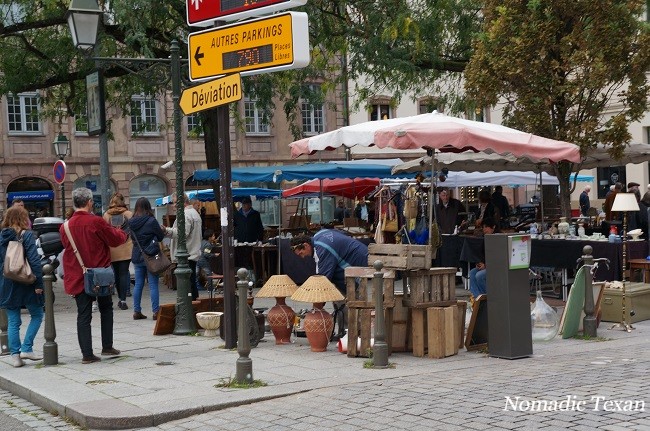
Strasbourg Flea Market Near Strasbourg Cathedral or the Cathedral of Our Lady of Strasbourg
As we boarded the Viking Eir and dropped our bags in the room I discovered a new found love for yet another European city. Strasbourg is a destination, given time, we will return to. I love the Alsatian foods, the sweets and the lovely and outgoing people. It warms my heart to this day to think about our experiences in the wonderful French city of Strasbourg. Now it’s on the Breisbach Germany before and our visit to the Black Forest!
***Portions of our cruise were sponsored by Viking River Cruises. All opinions, as always, are those of my own.
